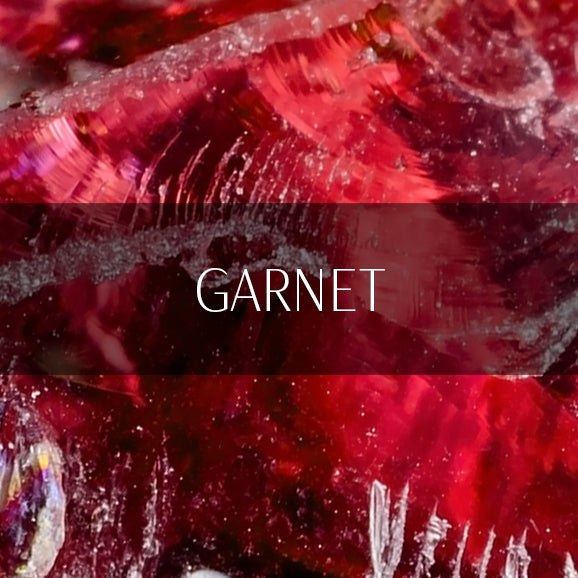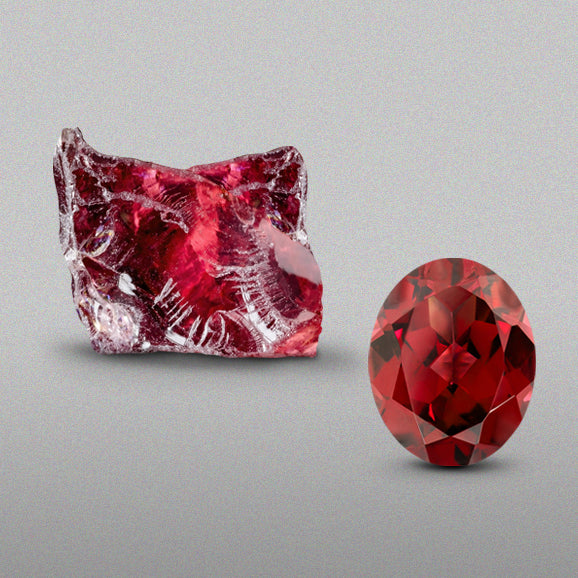The Geology And Chemistry Of Garnet
Garnet is a group of minerals consisting of silica. Silica is a widespread material, making up around 90% of the Earth's crust. All types of garnet have a similar crystal form with the different colours coming from other trace elements in the crystals. Some stones transmit a lot of light and therefore look clear, others are opaque and have no value as gemstones, it is common to use crushed garnet as an industrial abrasive.
Garnets are found in igneous, metamorphic and sedimentary rocks. Most garnets found near to the Earth’s surface comes from sedimentary rocks that have been held under high pressure and temperature.
In nature, garnets can be found as individual crystals, pebbles, as granular aggregates and as large stones.
Because garnets can be formed at the same time and in a similar way to diamonds, they are often used as an indicator by prospectors looking for diamonds. There are a vast number of garnets for every diamond so finding garnets often suggests the presence of diamonds nearby. Prospectors can follow a trail of garnets back to the source of the garnets and find diamonds in the rocks.
Garnet Jewellery
Garnet is a suitable gemstone for daily wear, it is relatively durable, although somewhat brittle. When wearing jewellery made with garnet, try not to let the gem be knocked as it might crack or shatter. Garnet has a Mohs hardness scale rating of 7-7.5 making it one of the hardest substances found in nature.
Unlike many other gemstones, garnets are very rarely treated to improve their colour or quality. In jewellery, they can be used as a relatively inexpensive substitute for ruby (red), yellow (topaz) and green (emerald) making it possible to create very showy pieces at a lower cost than might be expected if using the ‘real’ gemstones.
When buying garnet jewellery look at pendant or earrings for daily wear and keep rings and bracelets, which are more likely to receive sharp impacts, for special occasions. A well looked after garnet might last hundreds of years – after all, we have found garnets in jewellery going back thousands of years.
Unlike some gems, garnets will not fade under bright light or high temperatures.
Cleaning is best done using warm soapy water and possibly a soft toothbrush. If you want to use ultrasonic cleaners, check to make sure that your stone has no cracks before doing so.Garnet, especially in red, is a beautiful gem and makes lovely jewellery. Because it is relatively inexpensive, it makes an excellent choice for stunning, impressive pieces with large stones. If you were born in January, then you owe it to yourself to have at leastone item of garnet in your jewellery box.


